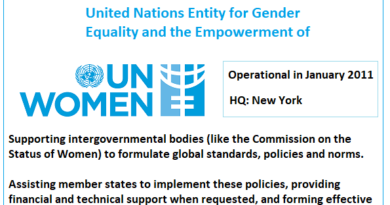Indian SARS-CoV-2 Genomics Consortium (INSACOG)
Ministry of Health and Family Welfare
About INSACOG:
- INSACOG (Indian SARS-CoV-2 Consortium on Genomics or Indian SARS-CoV-2 Genetics Consortium) is the forum set up under the Ministry of Health and Family Welfare by the Government of India
- Set upon 25 December 2020,
- Aim to study and monitor genome sequencing and virus variation of circulating strains of COVID-19 in India.
- Initially it was tasked to study the virus variant Lineage B.1.1.7 earlier found in United Kingdom in December 2020.
- INSACOG works as a consortium of 10 national laboratories for genome sequencing located in different parts of India.
- All these 10 laboratories are required to share 5% of positive samples to INSACOG for further research and studies.
- An National Centre for Disease Control (NCDC) nodal unit maintain a database of all samples of the new variants.
- Two national genomic sequencing database centers are appointed
- National Institute of Biomedical Genomics and
- CSIR Institute of Genomics and Integrative Biology.
- In its early research INSACOG identified virus variant Lineage B.1.617 referred to as a double mutation variant
Objective of INSACOG
- The SARS-CoV-2 virus, commonly known as COVID-19 virus posed unprecedented public health challenges globally. In order to fully understand the spread and evolution of the SARS CoV-2 virus, its mutations and resulting Variants, the need for in-depth sequencing and analysis of the genomic data was felt. Against this backdrop, INSACOG was established to expand whole genome sequencing of SARS-CoV-2 virus across the nation, aiding our understanding of how the virus spreads and evolves. Any changes to the genetic code, or mutations in the virus, can be observed based on the analysis and sequencing of samples done in the laboratories under INSACOG.
INSACOG has the following specific objectives:
- To ascertain the status of Variants of Interest (VoI) and Variants of Concern (VoC) in the country
- To establish sentinel surveillance and surge surveillance mechanisms for early detection of genomic variants and assist in formulating effective public health response
- To determine the presence of genomic variants in samples collected during super-spreader events and in areas reporting increasing trend of cases/deaths etc.
The strategy for SARS CoV-2 surveillance in India
- Initially, genomic surveillance was focused on the variants carried by international travelers and their contacts in the community through sequencing 3-5% of the total RTPCR positive samples.
Subsequently, the sentinel surveillance strategy was also communicated to the States/UTs in April 2021. Under this strategy, multiple sentinel sites are identified to adequately represent the geographic spread of a region, and RTPCR positive samples are sent from each sentinel site for Whole Genome Sequencing. Detailed SOPs for sending samples from the identified sentinel sites regularly to the designated Regional Genome Sequencing Laboratories (RGSLs) were shared with States/UTs. The list of INSACOG RGSLs tagged to States was also communicated to the States. A dedicated Nodal Officer was also designated by all States/UTs for coordinating the activity of Whole Genome Sequencing.
- Sentinel Surveillance (for all States/UTs/): This is an ongoing surveillance activity across India. Each State/UT has identified sentinel sites (including RT-PCR labs and tertiary health care facilities) from where RT-PCR positive samples are sent for Whole Genome Sequencing.
- Surge Surveillance (for districts with COVID19 clusters or those reporting a surge in cases): A representative nos. of samples (as per the sampling strategy finalized by State Surveillance Officer/Central Surveillance Unit) are collected from the districts which show a surge in the number of cases and are sent to RGSLs.
The Standard Operating Procedure (SOP) for sending samples to INSACOG laboratories?
- The Standard operating procedure for sending samples to INSACOG laboratories and subsequent action based on genome sequencing analysis is as follows:
- The Integrated Disease Surveillance Programme (IDSP) machinery coordinates sample collection and transportation from the districts / sentinel sites to Regional Genome Sequencing Laboratories. The RGSLs are responsible for Genome sequencing and identification of Variants of Concern/Variants of Interest, potential Variants of Interest, and other mutations. Information on Variants of Concern (VOC)/Variants of Interest (VOI) is submitted to Central Surveillance Unit, IDSP for establishing clinico-epidemiological correlation in coordination with State Surveillance Officers.
- Based on discussions in the Scientific and Clinical Advisory Group (SCAG) established to support the INSACOG, it was decided that upon identification of a genomic mutation which could be of public health relevance, RGSL will submit the same to SCAG. SCAG discusses the Potential Variants of Interest and other mutations and, if felt appropriate, recommends to Central Surveillance Unit for further investigation.
- The genome sequencing analysis and clinico-epidemiological correlation established by IDSP is shared with MOHFW, ICMR, DBT, CSIR and States/UTs for formulating and implementing requisite public health measures.
- The new mutations/variants of concern are cultured, and genomic studies are undertaken to see the impact on vaccine efficacy and immune escape properties.
The current status of Variants of Concern (VOC)
- Variants of Concern have been found in 174 districts in 35 States in India. Highest numbers of VOCs have been reported from districts in Maharashtra, Delhi, Punjab, Telangana, West Bengal & Gujarat. Variants of Concern of public health importance detected in community samples in India are: Alpha, Beta, Gamma and Delta.
The B.1.617 lineage, first observed in Maharashtra, was associated with the unusual rise observed in several districts of the State. It is now found in many States in India.
What is Delta Plus variant?
- B.1.617.2.1 (AY.1) or commonly known as Delta Plus variant signifies Delta variant with an additional mutation.
Source: PIB
You can find many articles on HEALTH (part of GS II) in our website. Go through these articles share with your friends and post your views in comment section.



